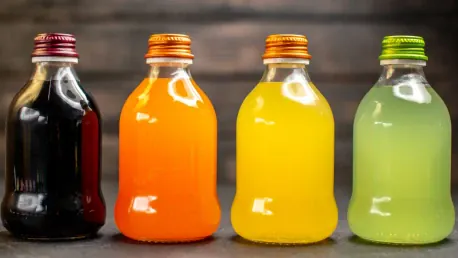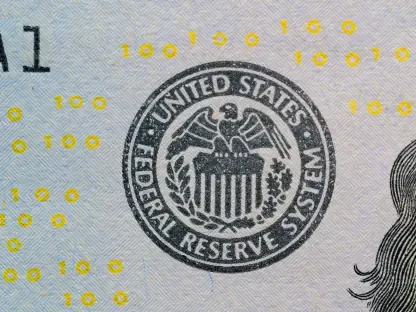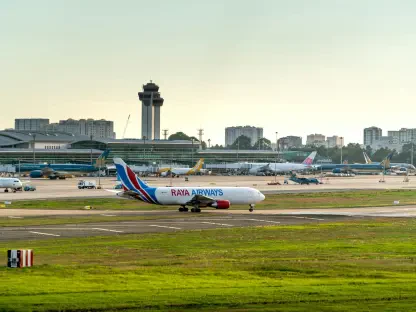The rapidly expanding trend of non-alcoholic alternatives to traditional spirits and beer presents an intriguing dynamic within social norms and drinking culture. Utilizing AI-powered listening tools, major beverage companies like Diageo and Heineken have identified a rising interest in such beverages, yet their widespread acceptance remains curbed by societal pressures. Diageo’s Foresight System, which scrutinizes over 160 million conversations, has highlighted the emerging practice of “zebra striping,” where individuals alternate between alcoholic and non-alcoholic drinks during social gatherings. This trend underscores a significant shift, indicating a more mindful approach to consumption that aligns with broader societal movements towards self-love and “decelerated occasions.”
Societal Barriers to Non-Alcoholic Beverage Adoption
Heineken, in collaboration with University of Oxford professor Charles Spence, has conducted research revealing that societal pressures significantly impede the complete adoption of non-alcoholic beverages. Despite the global 0.0 beer market’s estimated worth of $13.7 billion, there’s evident resistance, particularly within Generation Z. Research findings showed that 51% of those who planned to avoid alcohol ended up consuming it, mainly due to social expectations. This highlights a considerable barrier, as younger generations often refrain from openly displaying their preference for low- or non-alcoholic options due to peer influence.
Furthermore, this resistance represents a complex social dynamic that companies must navigate to promote non-alcoholic options effectively. The hesitancy faced by potential consumers illustrates the weight social norms carry in dictating beverage choices at social events. Addressing these barriers requires not only innovative marketing strategies but also broader cultural shifts that prioritize individual preferences over group expectations. The reluctant acceptance among younger consumers signals a gradual but promising change as more brands champion the benefits of non-alcoholic alternatives and seek to normalize their presence in the social drinking landscape.
Retail and Market Expansion
While societal pressures pose significant hurdles, the market for non-alcoholic beverages is seeing substantial growth, particularly in retail spaces such as Target. This increased availability signifies both rising consumer interest and a long-term commitment by major retailers to incorporate non-alcoholic options into their offerings. A notable example is the recent introduction of Bero, a premium non-alcoholic beer brand by Tom Holland, reflecting Target’s continued investment in this burgeoning category.
The shift towards spending on unique experiences and meaningful products is also apparent within consumer behavior. As individuals seek out more distinct “one-night-only” moments and genuine connections, the market for non-alcoholic beverages continues to expand beyond traditional boundaries. These developments, highlighted by the widespread adoption within mainstream retail channels, demonstrate a significant transition in consumer habits and preferences.
Changes in Socializing Habits
Concurrently, socializing habits are evolving with the advent of alternative social spaces such as virtual reality gaming lounges and hybrid physical-digital venues. This shift further emphasizes the changing paradigm in how individuals choose to socialize and consume beverages. The role of artificial intelligence is anticipated to be increasingly prominent, offering consumers valuable insights and aiding them in making more mindful decisions in their daily lives.
Ultimately, these changes underscore a broader movement towards integrating non-alcoholic options into mainstream social settings. Despite societal resistance, especially among younger demographics, there is a clear trend toward more mindful alcohol consumption and the acceptance of non-alcoholic alternatives. Companies must continue to innovate and address these societal barriers to ensure that non-alcoholic beverages can thrive within diverse social contexts.
Conclusion and Future Outlook
The rapid growth of non-alcoholic alternatives to traditional spirits and beer is creating an interesting shift in social norms and drinking habits. Major beverage companies like Diageo and Heineken are utilizing AI-powered listening tools to track this trend. These tools have revealed increasing interest in non-alcoholic drinks, though their acceptance is still hindered by societal pressures. Diageo’s Foresight System, which analyzes over 160 million conversations, has pinpointed a rising trend called “zebra striping.” This involves alternating between alcoholic and non-alcoholic drinks at social gatherings. The practice signals a notable change towards more mindful drinking, reflecting broader societal movements focused on self-care and more relaxed, deliberate social occasions. This shift reveals how consumer preferences are evolving, indicating a greater emphasis on health and well-being in the context of socializing, and challenging traditional drinking culture norms.









